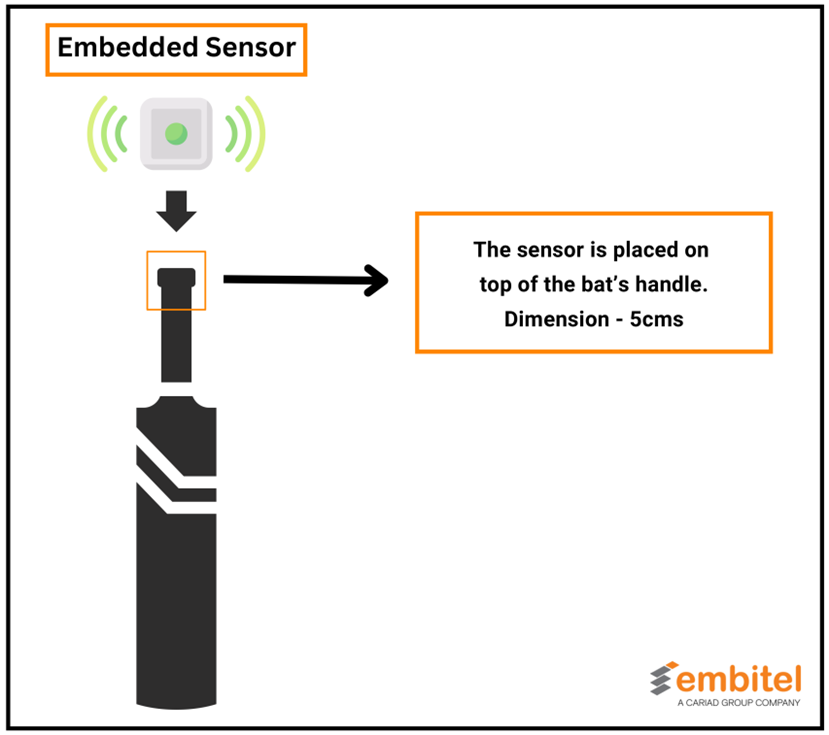IoT in CRICKET – A LEVEL RAISER FOR CRICKETERS!
Over the years, cricket has evolved to stay relevant and entertaining by fitting into the growing need for quick sporting action. The first ICC T20 World Cup was a raging success, with the first edition of IPL quickly following suit. Ever since then, we’ve all seen the game transform to a whole other level.
Cricketers are fitter, scoring more effectively, and bowlers always tend to have a trick or two up their sleeves. While records are now broken regularly, critics argue that the modern version of the gentleman’s game is all about rock and roll and improvisation, but less about traditional textbook cricketing action. Whether this is better for the sport or harms its integrity is a different discussion altogether.
However, it is important to understand how we’re frequently witnessing record-shattering performances at both ends – batting and bowling. Several players have credited their rigorous training regimes for their noteworthy performances.
But what has been that one standout change that has helped modern-day cricket’s training regime carve out global superstars regularly?
It’s the extensive use of data to train players for enhancing their skills and being mindful of their weaknesses. Teams today collect large amounts of performance-related data to train the players better with pinpoint accuracy. This is a fascinating use case of IoT in cricket.
The Need for IoT-based Coaching Aids
The conventional training tools used by world-class cricket players are expensive and pose a problem of affordability and accessibility to an aspiring cricketer.
There is a growing need for easy-to-use and affordable cricket training tools. That’s where IoT-based training tools could play a role in providing an aspiring cricketer better training insights at an affordable price!
IoT in Cricket – Existing Tools for Coaching
With competition becoming increasingly fierce, players and coaching staff can use the following tech inventions to raise the level of their performances. Let’s dive deep into how IoT in sports is revolutionizing athlete training.
Smart Stickers or wearable patches attached to the bat are excellent training tools to extract data on parameters that could potentially make a batsman’s career.
What makes these devices smart? Is it the IoT sensors? Is it the data collection, storage techniques, and connectivity, or is it the app itself?
In reality, it’s the entire framework, i.e., IoT, that makes it possible. However, one needs to understand that due to the predominant usage of established camera technology, the integration of IoT-based technology into the sport is novel.
Lightweight wearables – dimensioning only 5cms attached to the top of the bat handle – help collect several data sets to analyze tactical metrics such as Maximum Bat Speed, Impact Speed, Downswing Angle, Follow-Through Angle, Back-Lift Direction & Back-Lift.
Using parameters such as Maximum Bat Speed and Impact Bat Speed, coaches assess the timing of the shots and provide timely suggestions to improve the player’s game.
Live tracking of the above-mentioned data is made possible due to the data-sharing capabilities of the IoT framework. Selectors, coaches, and players can assess their performances using this technology.

How Does the Sticker/Wearable Patch Work?
The Sticker is attached to the top of the bat handle and mainly contains embedded sensors. Before the device starts collecting data, the user needs to calibrate it based on the orientation of the pitch, the weight of the bat, and its make.
Once the sensor is calibrated, it can now calculate the batsman’s performance metrics in real time!

When the batsman plays a stroke, the embedded sensors record key batting performance parameters as mentioned above. The data sets recorded are sent to a gateway where it is temporarily stored.
Based on the requirement, the IoT gateway can be equipped with certain data processing capabilities to reduce the burden on the cloud/server. Data from the gateway is then transferred to the cloud-based server where the AI/ML algorithm analyses the data and sends the extracted metrics to the mobile app.
Conclusion
IoT in cricket offers affordable yet effective training solutions that are easy to set up.
Research suggests that several products are currently being designed with IoT at its helm to enhance the training facilities of the globally loved sport. With training tools for batting successfully implemented in TNPL (Tamil Nadu Premier League), the scope for similar training tools that enhance the qualities of other aspects of the game i.e., bowling and fielding, is growing and waiting to be capitalized upon.
This entry was posted in Embedded Blog, Blog by Embitel. Bookmark the permalink
SUBSCRIBE
ASK OUR EXPERTS
POPULAR TAGS
RELATED SERVICES
Car HUD (Heads-up Display)
Go-to-market in 6 months with our automotive grade hardware and software design
Automotive Control Units
Electronic Control Units (ECU) development services for Body Control Modules (BCM), Powertrain, Chassis and Infotainment
AUTOSAR Software Services
AUTOSAR MCAL development, RTE and BSW integration, Application Layer development, Tools configuration and code generation
CUSTOMER SUCCESS STORIES

J1939 Stack for advanced EPS system
Find out how J1939 stack resolved on-chip memory issue for an Automotive Tier-I supplier

Software re-engineering | Telematics applications
Modular architecture re-design across fleet management product lines - GPS fleet security, vehicle and trailer tracking

IoT based Home Automation system
Design and development – Sensor Networks, Custom IoT gateway, Cloud and Mobile App



















